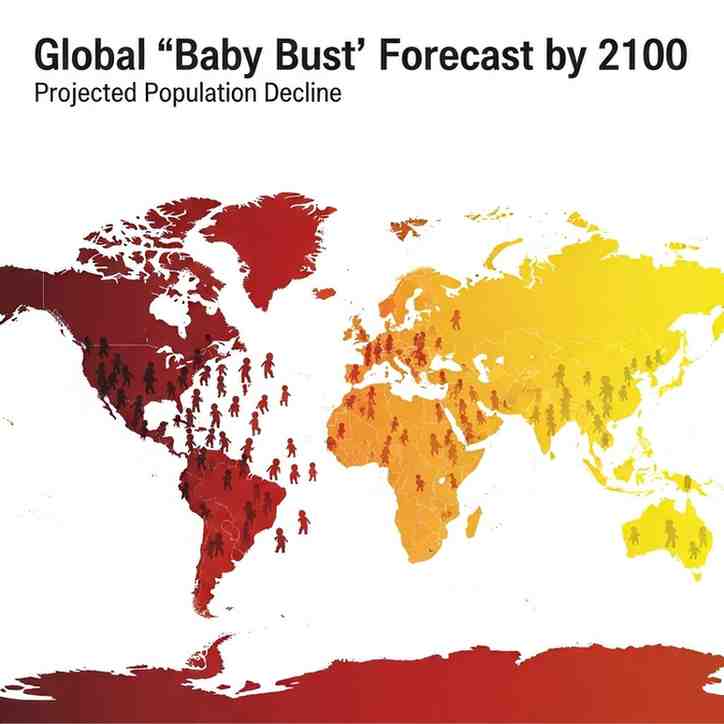
Exam-Oriented Key Points
1. Overview of the Report
-
A study published in “The Lancet” (by the Institute for Health Metrics and Evaluation – IHME) warns of a global fertility collapse by 2100 .
-
97% of countries are projected to have below-replacement fertility rates (below 2.1 children per woman) by the end of the century.
-
Researchers describe this as a “demographically divided world” , with far-reaching economic and social effects.
| Point |
Details |
| Source |
“The Lancet” study by IHME |
| Global Fertility Rate (1950) |
5.0 children per woman |
| Global Fertility Rate (2021) |
2.2 children per woman |
| Below-Replacement Level by 2050 |
155 of 204 countries (76%) |
| Below-Replacement Level by 2100 |
198 countries (97%) |
| Lowest TFR |
South Korea, Serbia (<1.1) |
| Highest TFR |
Chad (≈7) |
| Major Concern |
Ageing populations in developed nations; youth bulge in developing ones |
| Key Challenge |
Workforce shortages vs. unemployment pressures |
| Policy Focus |
Family-friendly policies, immigration, sustainable development |
2. Global Fertility Decline – Key Data
-
Replacement-level fertility: 2.1 children per woman (required to maintain stable population).
-
By 2050: 155 of 204 countries (≈76%) below replacement level.
-
By 2100: 198 countries (≈97%) below replacement level.
-
Global TFR (Total Fertility Rate) declined from 5.0 (1950) to 2.2 (2021) — nearly halved in seven decades.
-
Lowest Fertility: South Korea, Serbia — below 1.1 children per woman .
-
Highest Fertility: Chad — around 7 births per woman .
3. Regional Variations
Month: Current Affairs - November 05, 2025
Category: Population Studies